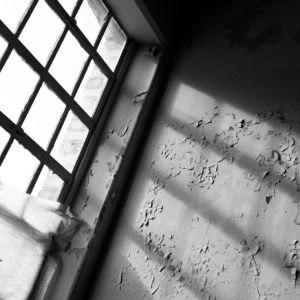Maryland Lead Paint Poisoning Lawsuit Verdict of $2.5M Overturned

An appellate panel of judges has reversed a $2.6 million verdict in a lead paint poisoning lawsuit awarded to two siblings who claimed to have suffered developmental damage while living in Baltimore City public housing.
A panel of three judges at the Maryland intermediate appellate court overturned a verdict for Antonio Fulgham, 21, and his sister, Brittany McCutcheon, 20, earlier this month.
The judges ruled that the siblings failed to notify the Housing Authority of Baltimore City within 180 days of their alleged lead exposure injury, disqualifying their claim. They were children at the time the damage occurred, in the 1990s, but did not file a lawsuit until December 2007, when they were in their teens.

Learn More About
Children diagnosed with lead poisoning after exposure to peeling or chipping lead paint in a rental home may be entitled to financial compensation and benefits.
Learn More About this Lawsuit SEE IF YOU QUALIFY FOR COMPENSATIONWhile Maryland law gives a child until the age of 21 to file a lead poisoning lawsuit, a local government agent, in this case the Housing Authority, must be notified within 180 days of the injury taking place. Had the claim been against a private landlord, the 180 day rule would not have applied.
During the original lawsuit, the trial court waived the rule given the circumstances of the case, but the opinion written by Judge Katheryn Grill Graeff of the Court of Special Appeals indicates that the lower court overstepped its bounds.
The original verdict was one of several that lead to the Housing Authority owing $12 million to plaintiffs who had successfully sued. However, last year, Baltimore Housing Commissioner Paul T. Graziano openly defied the courts, refusing to pay the lead paint poisoning damage awards. As a result, some of the Housing Authority’s assets, including some of its vehicles, have been seized.
The family has vowed to appeal the appellate court’s decision. There are other cases before the appellate panel which argue that the 180-day rule is unreasonable and unrealistic.
Lead poisoning can result in nervous system injury, brain damage, seizures or convulsions, growth or mental retardation, coma and even death for young children. The U.S. Centers for Disease Control and Prevention (CDC) consider 10 milligrams of lead per deciliter of blood to be the level of concern for exposure to lead. The CDC estimates that approximately 250,000 children in the U.S. have blood lead levels that high or higher.
One of the more common causes of lead exposure in the United States is lead paint, which was banned in 1978 due to the risk of severe and permanent brain damage and developmental problems, particularly in children. However, a number of older homes still contain the toxic paint on the walls, and if it flakes or peals off, young children could ingest the paint chips or breathe dust that comes from the paint, resulting in lead poisoning.
Get more articles like this sent directly to your inbox.
"*" indicates required fields






0 Comments